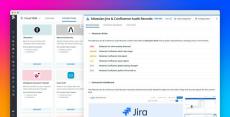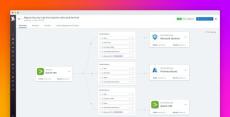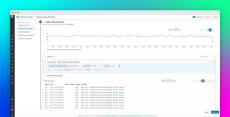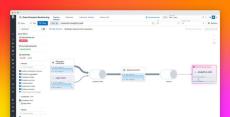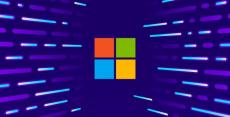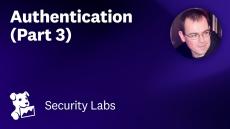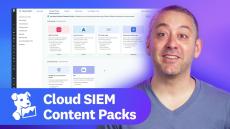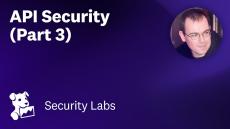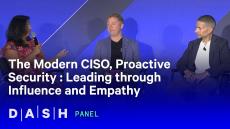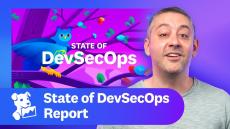|
By Vera Chan
Collaboration platforms like Atlassian Jira and Atlassian Confluence contain sensitive company and employee data, making them critical targets for cyberattacks. Teams use Jira to track and manage projects, and rely on Confluence as an internal knowledgebase for documentation, company policy guides, team wikis, and more. Atlassian organizations, which provide a centralized place for admins to manage their Atlassian products and users, are also prime targets.
|
By Micah Kim
As cyberattacks rise in number and sophistication, many CISOs are pushing their organizations to adopt modern SIEM solutions to better monitor and investigate threats to their applications and infrastructure. Enterprises with a large Microsoft Azure or Windows-based footprint in particular are increasingly eyeing Microsoft Sentinel to consolidate their security stack and workflows.
|
By Edith Mendez
Every day, insurance companies manage vast amounts of sensitive data, including medical records, financial information, and personal identifiers—all of which are processed and stored across various services, applications, and cloud resources. The types of sensitive data that these companies collect has become more complex and nuanced, with varying requirements for protection.
|
By Mallory Mooney
In Part 1 of our cloud security research and guide roundup, we looked at our contributions to helping you manage cloud infrastructure, data, identities, and access. In Part 2, we share our research, insights, and guides from Datadog Security Labs and The Monitor that support the NSA’s cloud mitigation strategies in the following areas: We’ll also go beyond these common strategies to look at how security plays a role in working with LLMs.
|
By Mallory Mooney
Developing in the cloud introduces unique challenges for protecting applications, resources, and data. These challenges include but are not limited to detecting legitimate threats to your environment and managing complex cloud permissions and access controls.
|
By Mallory Mooney
Google Workspace is a popular productivity suite, and its broad collection of apps (such as Gmail, Drive, Calendar, and Docs) can give attackers a central point of entry for accessing sensitive and valuable data if they compromise an account. Learning how to identify malicious activity in your Workspace environment enables you to stop threats before they become more serious. In this post, we’ll look at a few ways attackers gain access to and take advantage of Google Workspace.
|
By Nimisha Saxena
A primary goal for security teams is identifying specific threats to their environment, but they often face the daunting task of reviewing vast amounts of log data and alerts. Even with well-crafted detection rules, sifting through irrelevant data to pinpoint essential details for an investigation can be a significant challenge. This not only prolongs investigation times but also increases the risk of overlooking critical information.
|
By Jane Wang
Confluent Cloud is a Kafka–as-a-service solution that simplifies the deployment, scaling, and operation of Kafka clusters. A popular feature is its Apache Kafka connectors, which make it easy to connect your Kafka clusters to any of 120+ third-party streaming data sources and destinations.
|
By Bowen Chen
The use of version control systems, continuous integration (CI), container services, and other tools in software development have enabled developers to ship code more quickly and efficiently. However, as organizations expand their build and packaging ecosystems, they also increase the number of entry points for malicious code injections that can ultimately make their way to production environments.
|
By Mallory Mooney
According to our most recent cloud security report, most cloud security incidents are the result of compromised credentials for either human or non-human identities. Once an attacker successfully controls an identity, such as a highly privileged user account, they can quickly move to other areas of an environment, including prevalent targets like sensitive data stores. This pattern of behavior is similar across all cloud platforms and services.
|
By Datadog
In this video we’ll continue looking at how Kubernetes handles authentication with a look at service account token authentication.
|
By Datadog
Tune in to This Month in Datadog to learn about Kubernetes Active Remediation, which enables you to resolve workload issues with contextual next steps, as well as Datadog IaC Security and a trio of new features for monitoring AWS resources.
|
By Datadog
In this special edition webinar you’ll hear from Ami Dave, CISO of Fanatics about how Datadog enables Fanatics to scale securely.
This Month in Datadog: New Cloud SIEM Content Packs, Anthropic integration, Metrics Volume, and more
|
By Datadog
Datadog is constantly elevating the approach to cloud monitoring and security. This Month in Datadog updates you on our newest product features, announcements, resources, and events. This month, we put the Spotlight on new Cloud SIEM Content Packs..
|
By Datadog
In modern dynamic environments there is a requirement to be able to quickly respond to signals and change the configuration of your applications and systems. As Datadog supports an ever widening set of customer use cases, it has become necessary to allow for updates to systems directly from Datadog's platform. In this session, host Rory McCune (Senior Advocate) will be joined by Arthur Bellal (Staff Engineer) and Paul Coignet (Software Engineer II) from the fleet automation team to discuss how Datadog approached the challenge of building out a secure remote update facility.
|
By Datadog
Datadog is constantly elevating the approach to cloud monitoring and security. This Month in Datadog updates you on our newest product features, announcements, resources, and events. To learn more about Datadog and start a free 14-day trial, visit Cloud Monitoring as a Service | Datadog. This month, we put the Spotlight on Datadog App Builder.
|
By Datadog
In this video we’ll start looking at how Kubernetes handles authentication with a look at Client certificate auth.
|
By Datadog
In this video we’ll continue our look at the details of how Kubernetes secures the various APIs it uses, looking at the Kubelet API.
|
By Datadog
Ami Dave, Fanatics Emilio Escobar, Datadog Moderated by Andrew Krug.
This Month in Datadog: State of DevSecOps report, Event Management, Container Image Trends, and more
|
By Datadog
Datadog is constantly elevating the approach to cloud monitoring and security. This Month in Datadog updates you on our newest product features, announcements, resources, and events. To learn more about Datadog and start a free 14-day trial, visit Cloud Monitoring as a Service | Datadog. This month, we put the Spotlight on Datadog’s State of DevSecOps report.
|
By Datadog
As Docker adoption continues to rise, many organizations have turned to orchestration platforms like ECS and Kubernetes to manage large numbers of ephemeral containers. Thousands of companies use Datadog to monitor millions of containers, which enables us to identify trends in real-world orchestration usage. We're excited to share 8 key findings of our research.
|
By Datadog
The elasticity and nearly infinite scalability of the cloud have transformed IT infrastructure. Modern infrastructure is now made up of constantly changing, often short-lived VMs or containers. This has elevated the need for new methods and new tools for monitoring. In this eBook, we outline an effective framework for monitoring modern infrastructure and applications, however large or dynamic they may be.
|
By Datadog
Where does Docker adoption currently stand and how has it changed? With thousands of companies using Datadog to track their infrastructure, we can see software trends emerging in real time. We're excited to share what we can see about true Docker adoption.
|
By Datadog
Build an effective framework for monitoring AWS infrastructure and applications, however large or dynamic they may be. The elasticity and nearly infinite scalability of the AWS cloud have transformed IT infrastructure. Modern infrastructure is now made up of constantly changing, often short-lived components. This has elevated the need for new methods and new tools for monitoring.
|
By Datadog
Like a car, Elasticsearch was designed to allow you to get up and running quickly, without having to understand all of its inner workings. However, it's only a matter of time before you run into engine trouble here or there. This guide explains how to address five common Elasticsearch challenges.
|
By Datadog
Monitoring Kubernetes requires you to rethink your monitoring strategies, especially if you are used to monitoring traditional hosts such as VMs or physical machines. This guide prepares you to effectively approach Kubernetes monitoring in light of its significant operational differences.
- February 2025 (3)
- January 2025 (3)
- December 2024 (5)
- November 2024 (7)
- October 2024 (9)
- September 2024 (6)
- August 2024 (7)
- July 2024 (5)
- June 2024 (8)
- May 2024 (6)
- April 2024 (10)
- March 2024 (8)
- February 2024 (4)
- January 2024 (5)
- December 2023 (9)
- November 2023 (12)
- October 2023 (10)
- September 2023 (6)
- August 2023 (11)
- July 2023 (7)
- June 2023 (8)
- May 2023 (6)
- April 2023 (9)
- March 2023 (1)
- February 2023 (4)
- January 2023 (4)
- December 2022 (5)
- November 2022 (9)
- October 2022 (2)
- September 2022 (2)
- July 2022 (2)
- June 2022 (2)
- May 2022 (4)
- April 2022 (4)
- March 2022 (3)
- February 2022 (4)
- January 2022 (3)
- December 2021 (2)
- November 2021 (4)
- October 2021 (1)
- August 2021 (3)
- July 2021 (6)
- June 2021 (1)
- May 2021 (2)
- April 2021 (7)
- March 2021 (1)
- January 2021 (2)
- December 2020 (7)
- November 2020 (1)
- October 2020 (1)
- September 2020 (2)
- August 2020 (1)
- July 2020 (1)
- June 2020 (1)
- May 2020 (2)
- April 2020 (1)
- November 2019 (1)
- September 2019 (1)
- October 2018 (4)
- September 2018 (1)
- August 2018 (1)
Datadog is the essential monitoring platform for cloud applications. We bring together data from servers, containers, databases, and third-party services to make your stack entirely observable. These capabilities help DevOps teams avoid downtime, resolve performance issues, and ensure customers are getting the best user experience.
See it all in one place:
- See across systems, apps, and services: With turn-key integrations, Datadog seamlessly aggregates metrics and events across the full devops stack.
- Get full visibility into modern applications: Monitor, troubleshoot, and optimize application performance.
- Analyze and explore log data in context: Quickly search, filter, and analyze your logs for troubleshooting and open-ended exploration of your data.
- Build real-time interactive dashboards: More than summary dashboards, Datadog offers all high-resolution metrics and events for manipulation and graphing.
- Get alerted on critical issues: Datadog notifies you of performance problems, whether they affect a single host or a massive cluster.
Modern monitoring & analytics. See inside any stack, any app, at any scale, anywhere.
- AIOps
- Alerts
- Application Security
- Cloud Monitoring
- Container Monitoring
- Dashboards
- Database Monitoring
- Distributed Tracing
- Incident Response
- Infrastructure Monitoring
- Log Analytics
- Performance Monitoring
- Profiling
- SIEM
- Server Monitoring
- Serverless Monitoring
- Synthetic Monitoring
- Threat Detection
- Website Monitoring
- Alternatives to Datadog


